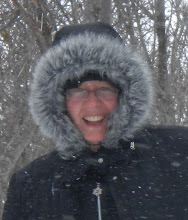Moose hairs are long, thick, and stiff. But when you fry them, they turn to shrunken, curly, wiry things. How do I know this? Experience. You see, there is no Public Health Department that roams the tundra checking food preparation sites. They don’t evaluate the snow, the dirt, the bathtub, the kitchen floor, or any other surface that an animal might get butchered on. (See “Alaska’s Bounties” in the blog.)
That makes things interesting in the food-making department. We get all sorts of little goodies here that we missed out on in the lower 48. Things like hairs, pebbles, and some suspicious looking goop. Makes life interesting—or disgusting.
Even with a three-washing system, we can’t seem to catch all the foreign matter. (My three-wash system? The hunk of meat gets hosed off good after it’s cut up, again before it gets frozen, and I all but scrub it before I cook it.)
We have a friend who shot a moose near the river. Well, the animal promptly walked to the middle of the river, and fell over. Since the thing has the body mass of a small elephant, they had to butcher it right there—underwater. You’d think that would solve the problem of foreign matter in the meat—but it didn’t. They were still picking out “stuff.”
Apparently, when you cut up an animal outside and on kitchen floors, there’s just no way around it—you are going to get extra little tidbits in the meat.
So I have become a very “picky” eater—I pick foreign objects out of my food. But try as I might, I can’t seem to get them all. I still find myself chewing on the occasional moose-hair. If I stay here much longer, I’ll be to be coughing up hair balls.
Subscribe to:
Post Comments (Atom)

No comments:
Post a Comment